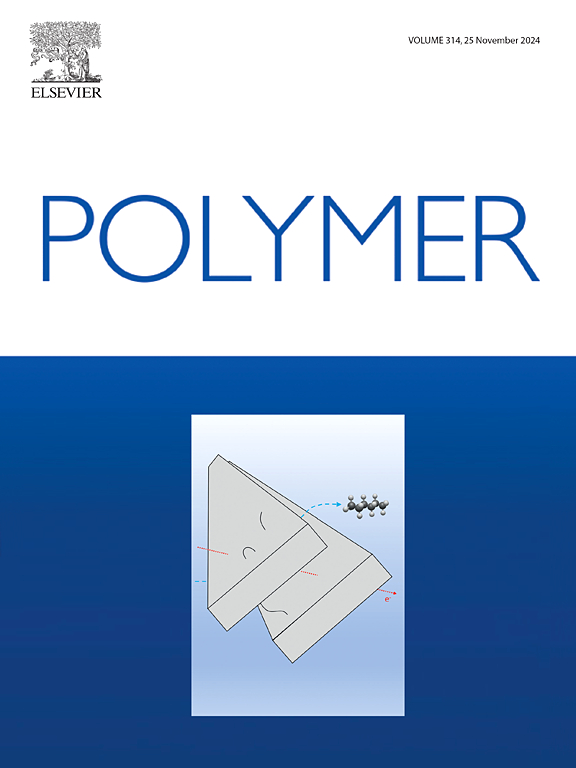3,4-Difluoropyridine based polymer additives for optimizing aggregation and phase separation enable 20.07 % efficiency layer-by-layer organic solar cells
IF 4.1
2区 化学
Q2 POLYMER SCIENCE
引用次数: 0
Abstract
Layer-by-layer (LbL) solution-processed organic solar cells (OSCs) have emerged as a promising approach for achieving controlled vertical phase separation and optimized donor-acceptor interfaces. However, precise morphology control still remains challenging for further elevating OSC performance. In this work, we report a molecular design strategy by utilizing conjugated polymer additives to optimize the active layer morphology for fabricating efficient LbL-OSCs. Three 3,4-difluoropyridine based polymers with systematically modified side chains, namely PDFN-H, PDFN-S and PDFN-F, have been prepared to regulate donor polymer aggregation and phase separation. Among them, PDFN-H additive demonstrated superior performance because of its lower miscibility with D18 donor, thus providing enhanced driving force for molecular packing and phase separation. Incorporation of 5 wt% PDFN-H led to a well-defined bicontinuous network morphology with improved charge transport pathways, finally resulting in an impressive power conversion efficiency (PCE) of 20.07 %. Detailed morphological and photophysical studies revealed that the enhanced performance stems from faster exciton dissociation, more balanced charge transport and suppressed recombination. This work demonstrates the effectiveness of rationally designed polymer additives for optimizing LbL-OSC performance and provides valuable insights for the development of more higher efficiency organic photovoltaic devices.


求助全文
约1分钟内获得全文
求助全文
来源期刊

Polymer
化学-高分子科学
CiteScore
7.90
自引率
8.70%
发文量
959
审稿时长
32 days
期刊介绍:
Polymer is an interdisciplinary journal dedicated to publishing innovative and significant advances in Polymer Physics, Chemistry and Technology. We welcome submissions on polymer hybrids, nanocomposites, characterisation and self-assembly. Polymer also publishes work on the technological application of polymers in energy and optoelectronics.
The main scope is covered but not limited to the following core areas:
Polymer Materials
Nanocomposites and hybrid nanomaterials
Polymer blends, films, fibres, networks and porous materials
Physical Characterization
Characterisation, modelling and simulation* of molecular and materials properties in bulk, solution, and thin films
Polymer Engineering
Advanced multiscale processing methods
Polymer Synthesis, Modification and Self-assembly
Including designer polymer architectures, mechanisms and kinetics, and supramolecular polymerization
Technological Applications
Polymers for energy generation and storage
Polymer membranes for separation technology
Polymers for opto- and microelectronics.
 求助内容:
求助内容: 应助结果提醒方式:
应助结果提醒方式:


